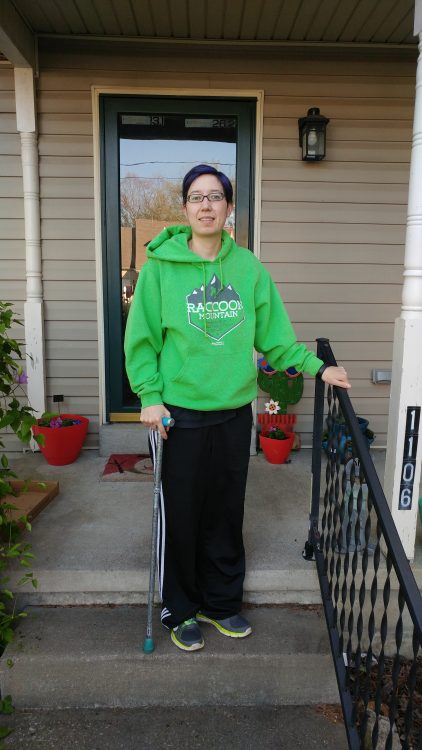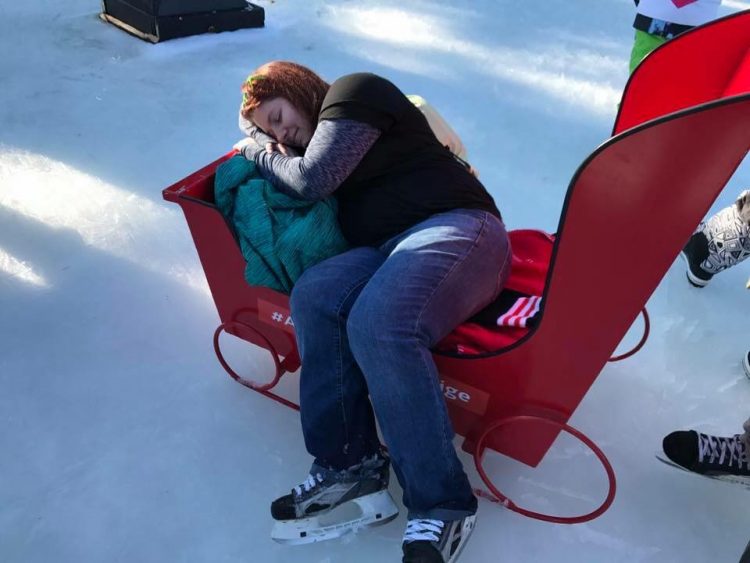In many peoples’ eyes, chronic illness and disability can be determined with a “yes” or “no” question. You’re either “sick” or “disabled” at all times, and unless you’re “cured,” you can’t possibly be well enough to do physical activities sometimes, and not others. But our community of chronic illness warriors knows from experience that there is a “gray area” of illness and disability — that space where you’re well enough to perhaps see a friend, go to work or finish your homework. But doing these activities might result in days of pain and fatigue afterwards, or require mobility aids. Or maybe you “look great,” but no one realizes you’ve just been released from the hospital. As contributor Mandy Contreras said so eloquently, “Maybe there are lots of us who feel lost in the in-between: too well to be disabled yet too disabled to be well.”
We wanted to shed light on what exactly the “gray area” of illness looks like, to demonstrate that you can’t always “see” a person’s health challenges — and therefore shouldn’t judge any difficulties they may be having. We asked our chronic illness community to share a photo of what the gray area of illness or disability is like for them. Hopefully these photos can help you feel supported, and help your friends and loved ones understand your illness and life a little better.
Here’s what our community shared with us:
1. “I have Ehlers-Danlos syndrome, postural orthostatic tachycardia syndrome (POTS) and delayed gastric emptying. Some days I can’t get out of bed because I’m in so much pain and so dizzy, some days I can’t eat an ounce of food by mouth, but some days I can go to the gym, I can grocery shop and almost look normal, some days I can have two full meals (still very small). For me the gray area is that some days my symptoms can be extreme and some days my symptoms can be almost non-existent.” — Alexis M.

2. “This is what I look like when I need to shower. But no one sees this. The same day I took this I was out with my godkids and family, enjoying a cookout, wearing normal clothes and seeming like a normal person. Then I come home to clean up and lay down. I have to get this all put together and get my shower chair out. I have 12 diagnoses of chronic illnesses. It takes me at least 30 minutes for what used to be a five-minute simple task. But it isn’t seen, so I’m ‘just fine.’ Just one of those gray areas.” — Catherine M.

3. “Despite how I feel most days from the pain and sometimes depression I still have to make it count and put my best foot forward to do what I love, being a business owner.” — Ivy M.

3. “On the left, my sister, best friend and I at Universal Studios. Yes, I was able to go and walk around and have the time of my life. These are the pictures I shared for people to see. But what they don’t see is me shaking and crying on the ride back to the hotel as my sister is frantically digging through my purse for my pain medications. And on the right, almost exactly a year later, while trick-or-treating (much less walking) I had to be in a wheelchair and still had to cut the night early. It’s hard being in this in-between place because you feel judged from both sides, even if it isn’t happening.” — Kari R.

4. “I managed to get the dishes done but haven’t been able to wipe down the counters! I have inflammatory arthritis in my wrists and have to work in short spurts. I find this to be frustrating because I am a certified public accountant and used to work long hours whereas I now stay at home as a housewife, and my house still isn’t perfectly clean like it used to be. Still, I try to count my blessings (like a phone with voice recognition) and take joy in my sufferings.” — Hanna O.

5. “Yesterday vs today. My EDS, chronic migraine and the accompanying bulldozering fatigue completely dictate the terms of my life. I have absolutely no idea when I go to bed at night whether I’ll wake up tomorrow to a rare day of vitality and energy, or if I’ll be annihilated by pain and exhaustion so bad I can barely move.” — Carl L.

6. “Yesterday I taught an art workshop. I was able to set up my materials and clean up, and I alternated between sitting and standing. What my students didn’t see was my husband helping me set up tables and lifting heavy objects for me. I was able to use a cart to push tables and chairs, but not stand them up. Ambulatory accommodations such as wheeled carts and standing height work surfaces make a big difference. My students didn’t know this, but I checked the accessibility of the venue for wheelchair users since I keep my manual chair in my trunk just in case. Having a cutting board with a built in blade helps me make even cuts in paper without hyperextending my fingers. On a good day, you might not notice my limp. But I’m never too far from my cane or a brace or a handrail. These human-centered accommodations help people of nearly all ages and abilities navigate public spaces and make spaces more friendly to people like me.” — Sara M.

7. “Me and my trusty folding cane. There when I need it, fits in my bag when I don’t.” — Mandy C.

8. “This is a picture of me on a retreat week with college. We did hiking and high ropes and camping and challenges with my whole year group and it was great! I love adventure things like this, but in order to maintain my strength for the activities, I used this all-terrain wheelchair buggy thing to get around the site because walking was too painful and tiring. I faced the week of being completely ignored by my team when I was sat in the chair or getting dirty judgmental looks when I’d get up and participate in the physical activities… If I hadn’t had the chair to help me walking up hills and getting around, I wouldn’t have lasted more than a day before I was totally exhausted and in complete agony, but I was able to pace myself and join in pretty fully! People don’t seem to understand that I know what’s best for my body and I can be ill and enjoy fun things too!” — Nae W.

9. “This is a photo of me trying to finish a uni assignment while I had awful nerve pain and spasms running up and down my legs. My gray area is canceling shifts at work and yet relying on those hours to pay for medical bills — not sick enough to receive help but sick enough to need it.” — Brody R.

10. “I have tons of pictures like this that my friends have sent me through the years, I try to push through the pain and fatigue and end up crashing and napping wherever I happen to be no matter how weird a location it is. My good days I look like a normal human being and try to stay active (until this inevitable crash) but my bad days I can’t even get out of bed.” — Pamela G.

11. “This is me just a few moments ago. I haven’t showered in a couple of days due to a flare with fibromyalgia. Even though I’m in pain, I still muster enough happiness to smile.” — Kristin N.

12. “Me, with my horse. I owned him for 25+ years. We rode all over Colorado before my accident. His last 10 years of life, he and I could not do that anymore. CRPS made my love and style of riding impossible. It was a hell all its own… part of me I couldn’t let go, yet part of me I was no longer able to do… He passed last week at age 28. And although I took great care of him, I felt guilty over my inability to ride him.” — Sharon M.

13. “This photo of me was taken on the night of one of the worst flares that I’d had in a long time. I was unable to get out of the same clothes I’d worn all weekend, and my head felt like it had been hit into the wall several times over. My entire body felt like it had been hit by a truck. But, I don’t ‘look’ like I am sick with pain. I am ill with fibromyalgia, but I fit into that gray area of illness. If you don’t see a problem, that doesn’t mean there isn’t one!” — Jocelyn L.

14. “I was in one of my best friend’s wedding this past summer, but underneath my dress I had my braces on and was taking my meds every few hours.” — Chelsea S.

15. “Simultaneously being an occupational therapy student and horseback rider (and instructor), while living with hEDS and co-morbidities. That gray zone for me is living each day not knowing if I’ll be the patient or get to stay the provider.” — Sara C.


